Nepeta – jing jie,Schizonepetae Herba,catmint,nepeta cataria,catmint herb,Nepeta herb,Schizonepeta
[Medicinal Use] This product is the stems, leaves and flower spikes of the Lamiaceae plant Schizonepeta.
[Nature and flavor and meridians] Pungent, warm. Enters the lung and liver meridians.
[Effects] Dispel wind and relieve symptoms, stop bleeding.
[Clinical Application] 1. Used for colds and wind-colds and colds and wind-heat symptoms
Schizonepeta has a sweating and diaphoretic effect, and has a wind-dispelling effect. It is mainly used to treat colds and wind-colds, fever and chills, no sweat, headache, body pain and other symptoms, and is often used with saposhnikovia divaricata. However, it can also be used with pungent and cool diaphoretic drugs or heat-clearing and detoxifying drugs to treat colds and wind-heat, fever and chills, red eyes and sore throat, such as mint, chrysanthemum, mulberry leaves, honeysuckle, etc.
2. Used for measles that are not breaking out
Schizonepeta has a pungent and dispersing effect that can help measles break out, and is often used in combination with mint, cicada shells, burdock seeds, etc.
3. Used for the initial stage of sores, fever and chills
Schizonepeta is also commonly used for those with superficial symptoms at the initial stage of sores. It can be used in combination with Saposhnikovia divaricata, honeysuckle, forsythia suspensa, red peony root, etc., which can not only reduce fever and cold, but also reduce carbuncle swelling.
4. Used for epistaxis, blood in stool, metrorrhagia, etc.
The application of schizonepeta charcoal has the effect of entering the blood and stopping bleeding. It can be used for blood in stool, metrorrhagia, etc. It is often used with other hemostatic drugs in clinical practice.
[Prescription name] Schizonepeta, Schizonepeta spicate (raw, mainly used to dispel wind and relieve exterior symptoms)
Stir-fried Schizonepeta (fried until slightly yellow, the release effect is alleviated)
Schizonepeta charcoal (fried until black, used to stop bleeding)
[General dosage and usage] One to three qian, decocted.
[Comments] 1. Schizonepeta, raw, has the effect of dispelling wind and relieving exterior symptoms, while stir-fried charcoal is used to stop bleeding. Combined with Saposhnikovia divaricata and Angelica dahurica, it can treat wind-cold symptoms; combined with honeysuckle, forsythia, and mint, it can treat wind-heat symptoms; combined with raw gypsum, it can treat wind-heat headache; combined with burdock seeds, platycodon, and raw licorice, it can treat sore throat; combined with Sophora japonica charcoal, it can treat blood in the stool; combined with Imperata cylindrica, it can treat epistaxis.
2. Both Nepeta tenuifolia and Perilla frutescens can induce sweating and relieve symptoms, but Perilla frutescens has a strong ability to dispel cold, tends to enter the qi, and can also regulate qi and relieve fullness; while Nepeta tenuifolia has a stronger ability to dispel wind, tends to enter the blood, and fried charcoal can stop bleeding. Therefore, Perilla frutescens is often used in qi-regulating prescriptions, while Nepeta tenuifolia is often used in blood-regulating prescriptions.
[Example of prescription] Jingfang Baidu San (“Shesheng Zong Miao Fang”): Nepeta tenuifolia, Saposhnikovia divaricata, Angelica dahurica, Angelica pubescens, Peucedanum chinense, Bupleurum chinense, Citrus aurantium, Platycodon grandiflorum, Red Poria cocos, Chuanxiong, and Licorice. Treats cold and heat in sores and ulcers.
Jingshu Powder (Collected Prescriptions): Schizonepeta spicata, Atractylodes macrocephala, red peony root, licorice, ginger, scallion. Treats exogenous wind-cold, aversion to cold, fever, headache.
[Literature excerpt] “Ben Jing”: “It treats cold and heat, fistula, scrofula and sores.”
“Compendium of Materia Medica”: “It dissipates wind and heat, clears the head and eyes, relieves throat, eliminates sores and swelling, treats stiff neck,… vomiting blood, epistaxis, bleeding, bloody diarrhea, metrorrhagia, hemorrhoids and fistula.”
“Bencao Zhengyi”: “According to postpartum wind spasm and opisthotonos, the ancients all believed that it was caused by wind and cold from the outside, directly attacking the sun. … Later generations still have Hua Tuo Yufeng Powder, one is stir-fried Schizonepeta, mixed with bean wine, and even hidden its name as Juqing Gubai Powder, thinking it is the best product. In fact, it is blood deficiency after childbirth, and the solitary yang rises,… Don’t make a mistake.”
This product is the dried aerial part of Schizonepeta tenuifolia Brig., a plant of the Labiatae family. Harvest when the flowers bloom to the top and the spikes are green in summer and autumn, remove impurities and dry in the sun.
[Properties]
The stem of this product is square columnar, with branches on the upper part, 50~80cm long and 0.2~0.4cm in diameter; the surface is light yellow-green or light purple-red, covered with short soft hairs; the body is light, brittle, and the cross section is white. The leaves are opposite, mostly fallen off, with 3~5 pinnate lobes, and the lobes are slender. The spike-shaped cyme is terminal, 2~9cm long and about 0.7cm in diameter. The corolla is mostly fallen off, the persistent calyx is bell-shaped, with 5 teeth at the tip, light brown or yellow-green, covered with short soft hairs; the small nuts are brown-black. The smell is fragrant, and the taste is slightly astringent and pungent.
[Pengenalan]
(1) The powder of this product is yellow-brown. The wall of the epidermal cells of the persistent calyx is deeply wavy. The head of the glandular scales is 8 cells, 96~112um in diameter, and the petiole is single-celled and brown-yellow. The head of the small glandular hairs is 1~2 cells, and the petiole is single-celled. Non-glandular hairs have 1 to 6 cells, most of which have wall warts. The cells of the exocarp are polygonal in surface view, with mucinous walls and brown-containing cavities; the cells are square or rectangular in cross section, with small cavities. The stone cells of the endocarp are light brown, with deep wavy curvature of the perivertebral wall and dense pores. The fiber diameter is 14 to 43 μm, with straight or wavy walls.
(2) Take 0.8 g of the crude powder of this product, add 20 ml of petroleum ether (60 to 90 ° C), plug tightly, shake from time to time, leave overnight, filter, and evaporate the filtrate to 1 m as the test solution. Take another 0.8 g of the control medicinal material of Nepeta and prepare the control medicinal material solution in the same way. According to the thin layer chromatography method (General Rule 0502), 10 μl of each of the above two solutions were taken and spotted on the same silica gel H thin layer plate, and developed with n-hexane-ethyl acetate (17:3) as the developing solvent. After development, the plate was taken out, dried, and sprayed with 5% vanillin in 5% sulfuric acid ethanol solution, and heated at 105°C until the spots were clearly colored. In the chromatogram of the test sample, spots of the same color appeared at the corresponding positions of the chromatogram of the control medicinal material.
[Pemeriksaan]
Water content shall not exceed 12.0% (General Rule 0832 Method 4).
Total ash content shall not exceed 10.0% (General Rule 2302)
Acid insoluble ash content shall not exceed 3.0% (General Rule 2302)
[Penentuan kandungan]
Volatile oil shall be determined according to the volatile oil determination method (General Rule 2204).
This product shall contain not less than 0.60% (ml/g) volatile oil.
Pulegone was determined according to the high performance liquid chromatography method (General Rule 0512). Chromatographic conditions and system suitability test. Octadecyl tridane bonded tridane gum was used as filler; methanol-water (80:20) was used as mobile phase; the detection wavelength was 252nm, and the theoretical plate should be calculated according to the pulegone peak. It should not be less than 3000. Preparation of reference solution Take an appropriate amount of pulegone reference substance, accurately weigh it, add methanol to make a solution containing 10ug per 1ml, and then prepare the test solution. Take about 0.5g of this product powder (passed through No. 2 sieve), accurately weigh it, put it in a county stopper conical flask, add methanol 10ml, ultrasonically treat (power 250W, frequency 50KHZ) for 20 minutes, filter it, add methanol 10ml again to the filter residue and filter paper, ultrasonically treat it once in the same way, filter it, wash it twice with an appropriate amount of methanol, combine the filtrate and washing liquid, transfer it to a 25ml volumetric flask, add methanol to the scale, shake it well, and you have it. Determination method: Accurately pipette 10 ml of reference solution and test solution respectively, inject into liquid chromatograph, and determine.
This product, calculated on the basis of dry product, contains not less than 0.020% pulegone (C10H160).
Medicinal pieces
[Memproses]
Remove impurities, spray with water, wash, moisten thoroughly, bake at 50℃ for 1 hour, cut into sections, and dry.
[Properties]
This product is in irregular sections. The stem is square columnar, with pale yellow-green or pale purple-red surface and short soft hairs. The cut surface is off-white. Most leaves have fallen off. Spike-shaped cyme inflorescence. The smell is fragrant, and the taste is slightly astringent and pungent.
[Penentuan kandungan]
The same medicinal material, containing not less than 0.30% (ml/g) volatile oil, and not less than 0.020% pulegone (C10H16O).
[Pengenalan]
The same medicinal material.
[Properties and meridians)
Sou: slightly warm. It enters the lung and liver meridians. [Function and indications]
Relieves the exterior wind, clears the rash, and eliminates sores. Used for colds, headaches, measles, rubella, and the initial stage of sores.
[Penggunaan dan dos]
5~10g.
[Storan]
Letakkan di tempat yang sejuk dan kering.
Where is the main origin of Schizonepeta?
It is mainly produced in Jiangsu, Zhejiang, Jiangxi, Hebei, and Hubei.
Where is the main medicinal part of Schizonepeta?
Medicinal part of Schizonepeta:
It is the dried aerial part of Schizonepeta tenuifolia Brig., a plant of the Labiatae family.
Characteristics of the medicinal part of Schizonepeta:
The stem of this product is dry square columnar, with branches on the upper part, 50~80cm long and 0.2~0.4cm in diameter; the surface is light yellow-green or light purple-red, covered with short soft hairs; the body is light, brittle, and the cross section is white. The leaves are opposite, most of them have fallen off, the leaves are 3~5 pinnate-shaped, and the lobes are slender.
The spike-shaped cyme inflorescence is terminal, 2~9cm long and about 0.7cm in diameter. The corolla is mostly deciduous, bell-shaped, with 5 teeth at the tip, light or yellow-green, and covered with short soft hairs: the nutlets are brown-black. The smell is fragrant, and the taste is slightly spicy and cool.
How are schizonepeta recorded in ancient books?
“Ben Jing”: “It is used to treat cold and heat, rat paralysis, scrofula and sores, and to remove blood stasis and dampness.
“Compendium of Materia Medica·Volume 24”: “It can disperse wind and heat, clear the head and eyes, benefit the throat, eliminate sores and swelling, treat stiff neck, black spots in the eyes and sores, leprosy, vomiting blood, epistaxis, bleeding, bloody diarrhea, metrorrhagia, and hemorrhoids.
Kesan
Schizonepeta has the effects of dispelling wind, clearing rashes, and eliminating sores.
What are the main effects and clinical applications of schizonepeta?
Schizonepeta is used for colds, headaches, measles, rubella, and the initial stage of sores.
Exterior symptoms
· Treat wind-cold exterior symptoms, often used together with Fangfeng and Qianghuo.
· Treat wind-heat symptoms, often used with honeysuckle, forsythia, mint, etc.
Measles, rubella
· Treat measles at the beginning, if the rash is not smooth, often used with cicada shells, mint, burdock seeds, etc.
· Treat rubella itching, often used with windproof, raw rehmannia, angelica, etc.
Initial onset of sores
Treat sores at the beginning with symptoms, can be used alone, or with angelica root, bupleurum, Chuanxiong, etc.
Bleeding
Treat vomiting blood, blood in stool, metrorrhagia and other bleeding, can be added to the treatment prescription.
What other effects does Schizonepeta have?
Commonly used medicinal diet recipes for Schizonepeta are as follows:
Deafness and fainting
· 1 large sheep coccyx. 5 bowls of water, boil and reduce by half, add 5 stalks of green onion, 1 handful of Schizonepeta, 30g tangerine peel, 90g flour. · Cook, extract juice, make noodles into cakes, cook with 120g mutton, and eat with five flavors.
Schizonepeta porridge
·It is composed of 5~10g of Schizonepeta, 3~5g of mint, 5~10g of light fermented black beans, and 50g of polished rice. ·First, boil Schizonepeta, mint, and light fermented black beans for 5 minutes, remove the residue and take the juice: wash the polished rice and cook it into porridge; when the porridge is almost cooked, add the juice and cook it into porridge together; take it twice a day, warm.
The effect is to dispel wind and relieve the symptoms, and relieve sore throat. It is suitable for colds and flu, with symptoms such as fever, chills, headache, sore throat, etc.
What are the compound preparations containing Schizonepeta?
Yinqiao Powder
It is pungent and cool, penetrates the surface, clears heat and detoxifies. It is used for exogenous wind and cold, fever and headache, dry mouth and cough, sore throat, and short and red urine.
Xiaofeng Powder
It dispels wind and nourishes blood, clears heat and removes dampness. It is mainly used to treat rubella and eczema. The skin rash is red, or there are cloud-like spots all over the body, it itches, and oozes fluid after scratching, the tongue coating is white or yellow, and the pulse is floating and rapid.
Jingfang Baidu San
Disperse wind-heat, treat colds or sores at the beginning.
Jingjie Siwu Tang
Mainly treats the initial onset of metrorrhagia, regardless of deficiency or excess. Symptoms include premature menstruation, heavy flow, red color, sticky texture, clots, irritability, thirst, yellow, and strong pulse.
Modern research progress on jingjie
This product has multiple pharmacological effects such as sweating, antipyretic, analgesic, anti-inflammatory, anti-pathogenic microorganisms, hemostasis, and inhibition of smooth muscle contraction.
Kaedah penggunaan
Schijie has the effects of dispelling wind, clearing rashes, and eliminating sores. Schijie is generally used as jingjie slices and decocted. Please follow the doctor’s advice for specific medication.
How to use jingjie correctly?
When jingjie decoction is taken orally, the usual dosage is 3~10g; jingjie should not be decocted for a long time.
When jingjie is used externally, take an appropriate amount of jingjie, decoct water to fumigate and wash the affected area, or mash it for external application, or grind it into powder for application.
After different processing methods, Schizonepeta can be used to produce Chinese medicinal materials such as Schizonepeta, fried Schizonepeta, and Schizonepeta carbon. It is mostly used raw to relieve rash and sores; it is suitable to be fried and charred to stop bleeding.
Different processing methods have different effects, but the medication method is the same. Please follow the doctor’s instructions for specific medication.
Schizonepeta is generally used in decoctions, decocted and taken, and can also be made into powders or pills for consumption. However, the use of Chinese medicinal materials must be treated according to syndrome differentiation and should be used under the guidance of professional Chinese medicine practitioners. It should not be used at will, and it should not be used at will, let alone listen to Chinese medicine prescriptions and advertisements at will.
In addition, Schizonepeta can also be used for daily health care. The common methods of consumption are as follows:
· Soaking in wine: Schizonepeta can be used with Chinese medicines such as Angelica, Chuanxiong, and Dipsacus as a matcha to soak in wine, which has the effects of dispelling wind and cold, promoting blood circulation and relieving pain. Cooking porridge (Schizonepeta porridge): 5~10g Schizonepeta, 3~5g mint, 5~10g light fermented black beans, and 50g polished rice to cook porridge, which has the effects of dispelling wind and relieving exterior symptoms and relieving sore throat. Suitable for colds and flu, symptoms include fever, chills, headache, sore throat, etc.
How to prepare Nepeta?
Nepeta
Take the original medicinal material, remove the residual roots, thick stems, and impurities, wash with water, moisten slightly, cut into sections, and dry. Stir-fried Nepeta
Put Nepeta sections in a stir-fry pot, heat with slow fire, stir-fry until slightly yellow, take out, and let cool. Nepeta charcoal
Put Nepeta sections in a stir-fry pot, heat with high fire, stir-fry until the surface is dark brown and the inside is burnt brown, spray a little water, extinguish the sparks, take out, and let dry
Dry and cool thoroughly.
Which drugs should be used with Nepeta at the same time with special attention?
The combined use of traditional Chinese medicine and the combined use of traditional Chinese and Western medicines require syndrome differentiation and treatment, and clinical individualized treatment. If you are using other drugs, please consult a doctor before taking the medicine, and inform the doctor of all your diagnosed diseases and treatment plans you are receiving
Arahan penggunaan
Nepeta is pungent and warm, and it consumes qi and hurts yin, so it is not suitable for people with weak body, sweating, and yin deficiency headache.
What precautions should be taken when using Schizonepeta?
Symptoms such as wind-heat or warm-heat, internal heat, yin deficiency and hyperactivity of fire, blood deficiency and blood heat should not be taken alone.
·It is pungent and dispersing. Long-term use can damage body fluids and consume qi. People with qi deficiency, infants, the elderly and other weak people should not take it for a long time.
During medication, be careful not to eat cold, raw and cold foods, spicy and greasy foods. .
Pregnant and lactating women: If you are pregnant, planning to be pregnant or are lactating, please inform your doctor in time and consult whether Chinese medicine can be used for treatment.
Children: Children’s medication must be carried out under the guidance of a doctor and adult supervision.
Sila simpan bahan ubat dengan betul dan jangan berikan bahan ubat yang anda gunakan kepada orang lain. .
How to identify and use Schizonepeta?
Schizonepeta is pungent in nature and slightly warm. It belongs to the lung and liver meridians. It has the effect of dispelling wind and clearing rashes. It is often used raw.
Raw products are good at dispersing wind-heat, relieving throat, clearing the head, and are mostly used for colds, headaches, rashes, sores at the beginning, and all wind-toxic symptoms, which have come out but not yet come out, and want to dissipate but cannot be dispersed.
Roasted charcoal can stop bleeding, and is mostly used for blood in stool, women’s metrorrhagia, and postpartum blood fainting.
Petua ubat
Patients’ most frequently asked questions
Efficacy and function of compound schizonepeta heavy wash
Compound schizonepeta fumigation wash is composed of schizonepeta, fangfeng, peony root, raw Chuanwu, toad grass, raw kusnezoffii, and sophora flavescens.
It has the effects of dispelling wind and dampness, reducing swelling and relieving pain. It is used for external hemorrhoids, mixed hemorrhoids, prolapsed and incarcerated internal hemorrhoids, anal fissures, perianal abscesses, and acute anal attacks.
Efficacy and function of schizonepeta charcoal
Schizonepeta is pungent in nature and slightly warm. It enters the lung and liver meridians. It has the effects of dispelling wind and clearing rashes. It is mostly used raw.
Roasted charcoal can stop bleeding, and is mostly used for blood in stool, women’s metrorrhagia, and postpartum blood fainting.
Nepeta – jing jie
Price range: $58.88 through $32,666.00
+ Penghantaran PercumaNepeta – jing jie,Schizonepetae Herba,catmint,nepeta cataria,catmint herb,Nepeta herb,Schizonepetae Herba, [jing jie], Chinese herbal medicine, alias: false sedge, four-angled stem wormwood, fragrant schizonepetae, English name: Schizonepetae Herba Main effects: dispelling wind, dispersing rash, eliminating sores
The Chinese herbal medicine jingfen is an antipyretic drug, which is the dried aerial part of the plant jing of the Labiatae family.
Schizonepetae is pungent in nature and slightly warm. It enters the lung and liver meridians.
Schizonepetae raw is pungent, slightly warm and dispersing, and enters the lung and liver meridians. It is good at dispersing wind evil in the muscle surface and blood to dispel the surface, eliminate rash, relieve itching, and treat sores, and also dispersing internal wind and stopping spasms. It has a mild effect, dispersing wind and dispersing the exterior, and is suitable for both wind-cold and wind-heat. The roasted charcoal is slightly warm and astringent, enters the liver meridian and blood, astringes and stops bleeding, and is good for treating metrorrhagia.
This product contains volatile oils, monoterpenoids, flavonoids and other ingredients, and has the effects of dispelling wind, dispersing rash, and eliminating sores.
| Berat badan | 1 kg, 10 kg, 100 kg, 500 kg, 1000 kg |
|---|---|
| taip | Nepeta, Fried Nepeta, Nepeta carbon |
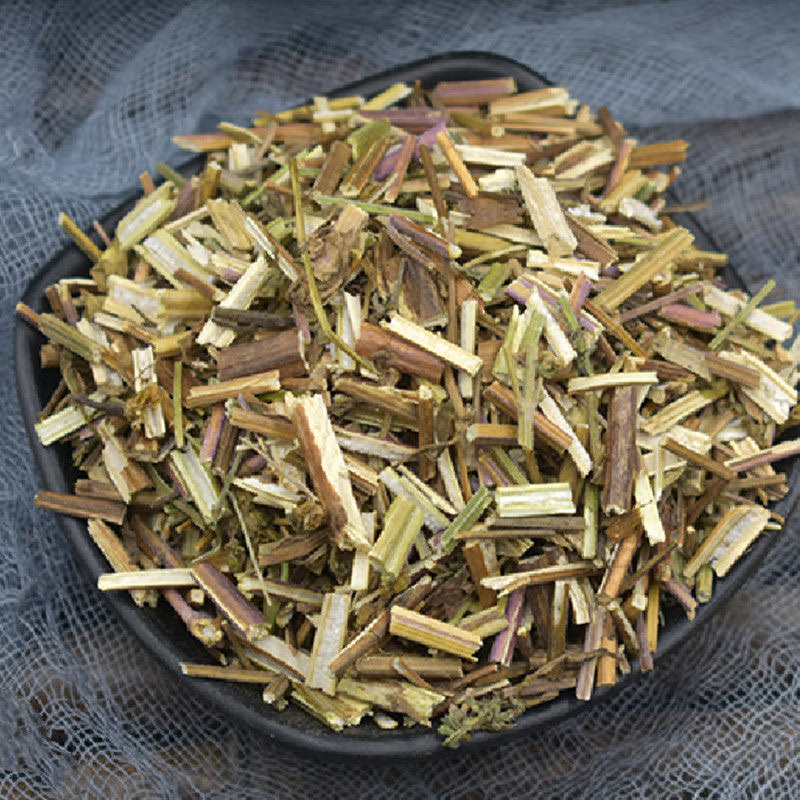
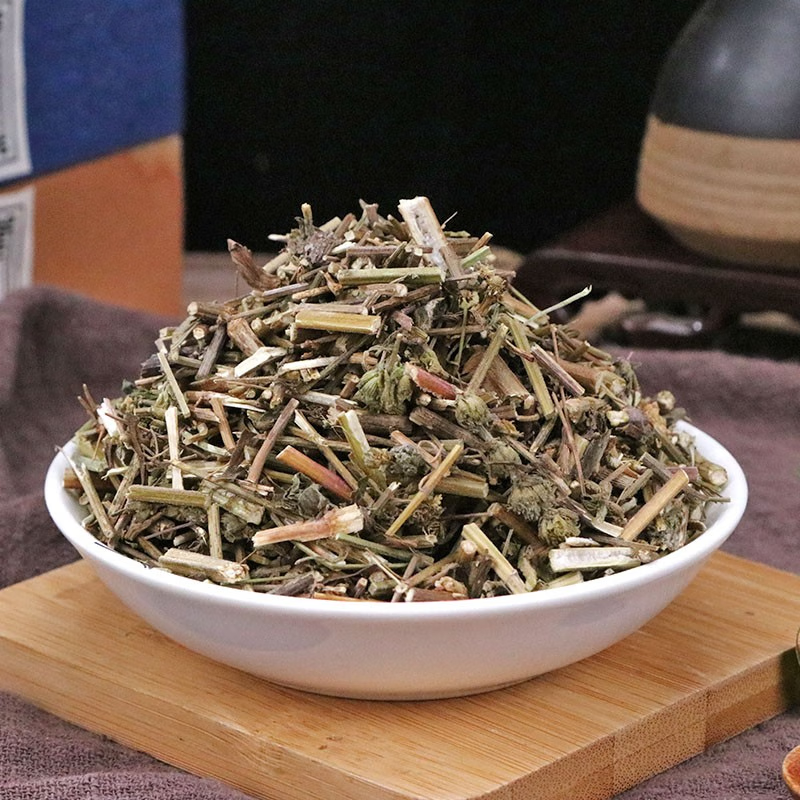









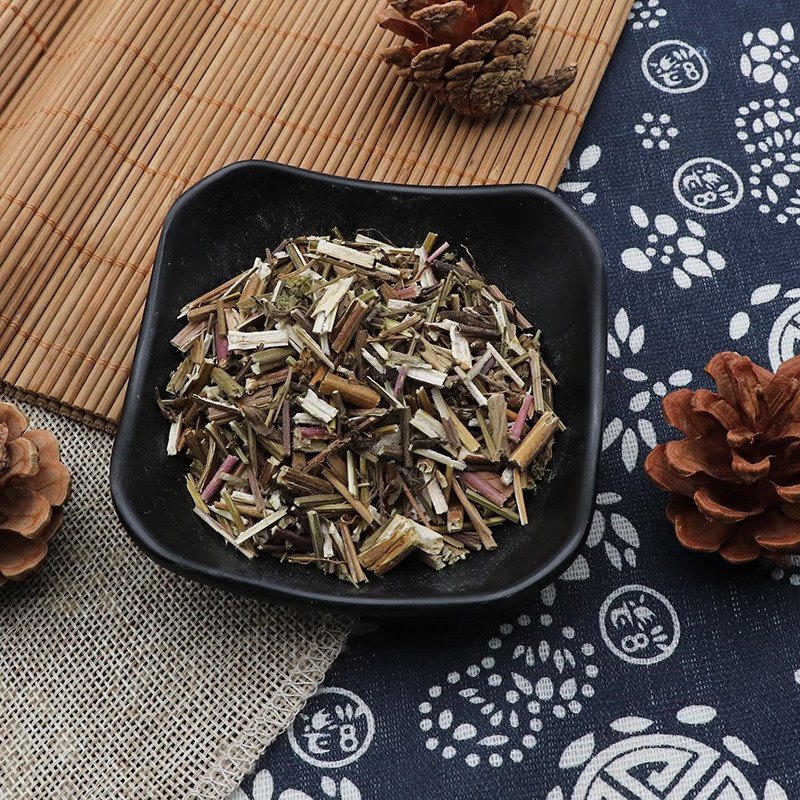

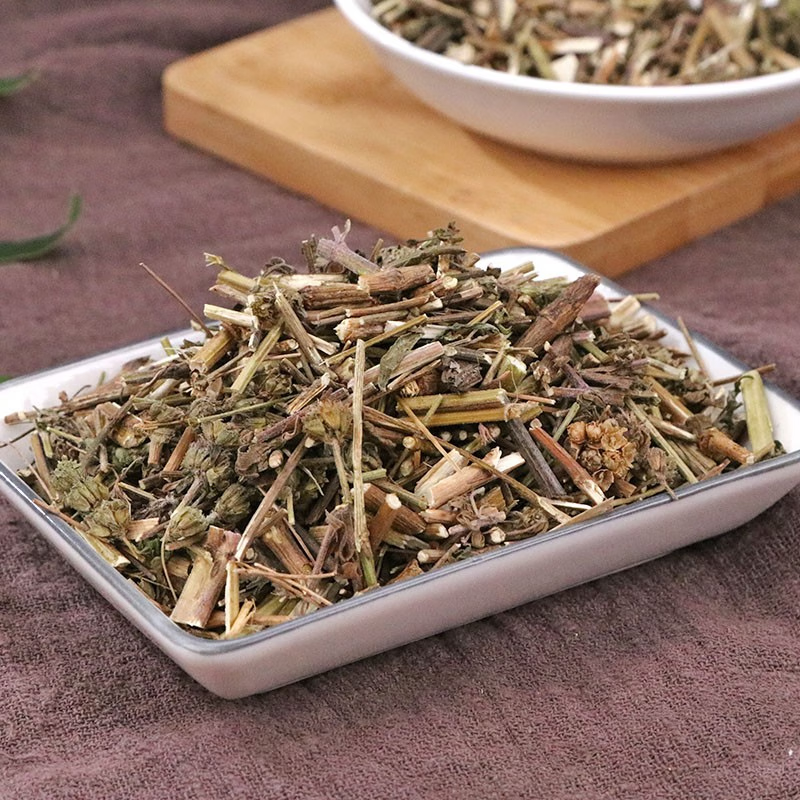



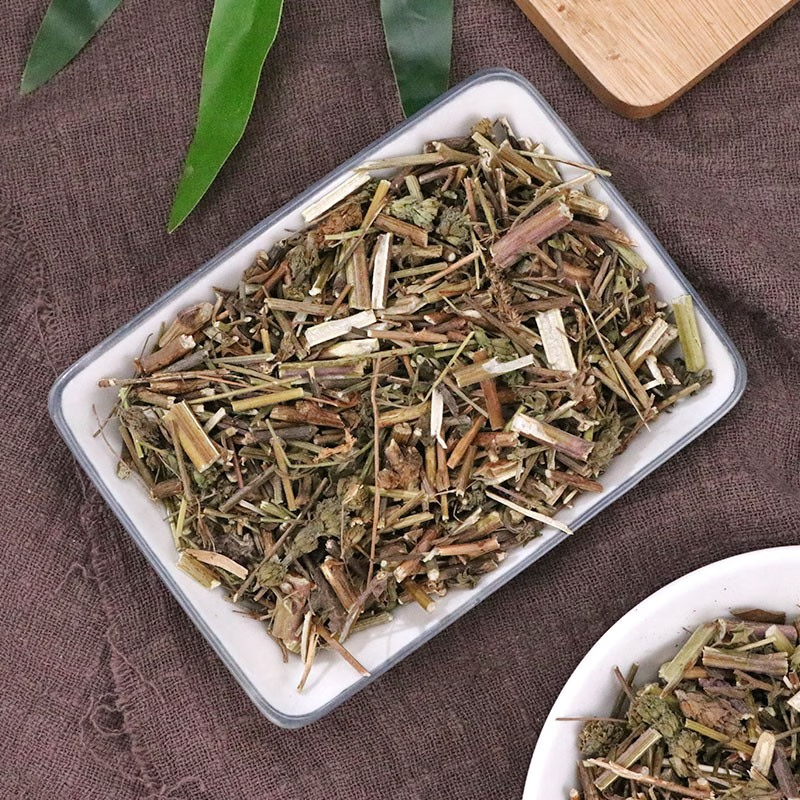
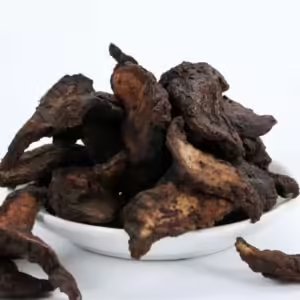
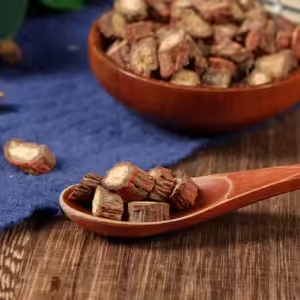
Ulasan
Tiada ulasan lagi.